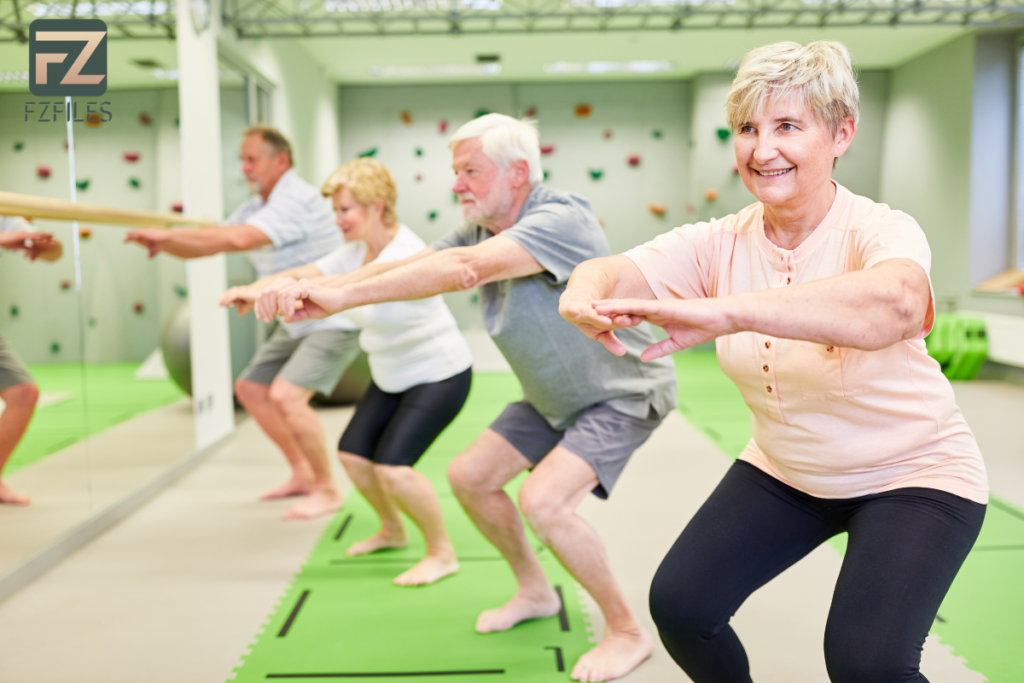Introduction to Strength Training for Seniors
As we age, maintaining physical health becomes increasingly important to ensure a high quality of life. Strength training is a vital component of a comprehensive fitness routine for seniors. It helps maintain muscle mass, improve balance, and enhance overall physical and mental well-being. Unlike high-intensity workouts, strength training can be tailored to meet the specific needs of older adults, making it a safe and effective way to stay active and healthy.
Strength training for seniors involves using resistance to build muscle strength, improve bone density, and increase flexibility. This resistance can come from free weights, bands, or body weight. The benefits of strength training extend beyond physical health; it can also boost mood, enhance cognitive function, and improve sleep quality.
Benefits of Strength Training for Seniors
Strength training offers numerous benefits for older adults. Here are some key advantages:
- Maintaining Muscle Mass
As we age, bulk normally diminishes, a condition known as sarcopenia. Strength preparation balances this interaction by invigorating muscle development and support. Regular strength training exercises help seniors retain muscle mass, which is crucial for mobility and independence.
- Improving Balance and Reducing Fall Risk
Falls are a significant concern for older adults. Strength training strengthens the muscles that support balance and stability, such as the core, legs, and back. Improved muscle strength can reduce the risk of falls and related injuries, enhancing overall safety and confidence in daily activities.
- Enhancing Bone Density
Osteoporosis, a condition portrayed by debilitated bones, is normal among seniors. Strength training stresses bones, stimulating bone growth and increasing bone density. This can help reduce the risk of fractures and osteoporosis-related complications.
- Boosting Metabolism and Weight Management
Strength preparation increments bulk, which thus supports digestion. A higher metabolic rate helps the body burn more calories at rest, making it easier to manage weight and prevent obesity-related health issues.
- Improving Mental Health and Cognitive Function
Exercise, including strength training, releases endorphins, which can improve mood and reduce symptoms of depression and anxiety. Additionally, physical activity has been shown to enhance cognitive function, potentially lowering the risk of dementia and cognitive decline.
- Enhancing Quality of Life
Overall, strength training contributes to a higher quality of life for seniors by improving physical health, enhancing mental well-being, and maintaining independence. Regular exercise can lead to better sleep, more energy, and a greater sense of accomplishment.
Safe and Effective Exercises for Seniors
When designing a strength training routine for seniors, it’s important to choose exercises that are safe and effective. Here are some recommended exercises that target various muscle groups:
- Chair Squats
Chair squats strengthen the legs and glutes, improving mobility and balance.
- How to do it: Stand in front of a chair with feet shoulder-width apart. Lower your body as if you are going to sit down, then rise back up without actually sitting. Repeat 10-15 times.
- Wall Push-Ups
Wall push-ups target the chest, shoulders, and arms while being easier on the joints than traditional push-ups.
- How to do it: Stand a few feet away from a wall, place your hands on the wall at shoulder height, and perform a push-up motion by bending and straightening your arms. Repeat 10-15 times.
- Seated Row with Resistance Bands
This exercise strengthens the upper back and improves posture.
- How to do it: Sit on a chair and loop a resistance band around a sturdy object. Hold the ends of the band, keep your back straight, and pull the band towards you, squeezing your shoulder blades together. Repeat 10-15 times.
- Standing Leg Curls
Standing leg curls target the hamstrings and improve balance.
- How to do it: Stand behind a chair and hold onto it for support. Lift one foot towards your glutes, bending at the knee, then lower it back down. Repeat 10-15 times on each leg.
- Bicep Curls with Dumbbells
Bicep curls strengthen the arms and can be done with light dumbbells.
- How to do it: Hold a dumbbell in each hand with arms at your sides. Gradually twist the loads up towards your shoulders, then, at that point, lower them back down.
- Repeat 10-15 times.

Creating a Strength Training Routine for Seniors
Creating a strength training routine for seniors involves choosing exercises that target different muscle groups and scheduling regular workout sessions. Here are a few ways to make a viable daily practice:
- Start Slow and Progress Gradually
Start with light loads or opposition groups and spotlight on the appropriate structure. Bit by bit increment the obstruction and force as strength moves along. Hold back nothing three strength instructional courses each week, permitting somewhere around one day off between meetings.
- Incorporate a Warm-Up and Cool-Down
Always start with a warm-up to prepare the muscles and reduce the risk of injury. A five to ten-minute warm-up can include gentle cardio, such as walking or marching in place. After the workout, cool down with stretching exercises to improve flexibility and reduce muscle soreness.
- Mix Up the Exercises
Include a variety of exercises that target different muscle groups to ensure a balanced workout. This can prevent overuse injuries and keep the routine interesting.
- Listen to Your Body
It’s essential to pay attention to your body and try not to push excessively hard. If an activity causes torment, pause and counsel a medical care supplier or wellness proficient. Adjust practices depending on the situation to oblige any actual limits.
- Stay Consistent
Consistency is key to seeing results. Encourage regular exercise and make it a part of the daily routine. Keeping track of progress can also provide motivation and a sense of accomplishment.
Expert Tips and Precautions
To ensure safe and effective strength training for seniors, consider the following expert tips and precautions:
- Consult a Healthcare Provider
Before starting a new exercise program, it’s important to consult a healthcare provider, especially if there are any existing health conditions or concerns. They can provide personalized recommendations and ensure that the chosen exercises are safe.
- Work with a Fitness Professional
A certified fitness professional can design a customized strength training program that meets individual needs and goals. They can give customized proposals and guarantee that the picked practices are protected.
- Stay Hydrated and Eat Well
Appropriate hydration and sustenance are fundamental for ideal execution and recuperation. Drink a lot of water previously, during, and after work out. A balanced diet that includes adequate protein, carbohydrates, and healthy fats can support muscle growth and overall health.
- Monitor Progress and Adjust as Needed
Regularly assess progress and make adjustments to the routine as needed. This can involve increasing the resistance, adding new exercises, or changing the number of sets and reps.
- Stay Positive and Have Fun
Maintaining a positive attitude and enjoying the exercise routine can enhance motivation and adherence. Find activities that are enjoyable and vary the routine to keep it interesting.
Conclusion
Strength training is a powerful tool for seniors to maintain physical health, improve balance, and enhance overall quality of life. By incorporating safe and effective exercises into a routine, older adults can enjoy the numerous benefits of strength training and stay active and independent.

[…] digestion is a cornerstone of the Fit for Life diet. By following specific eating patterns and food combinations, the diet […]